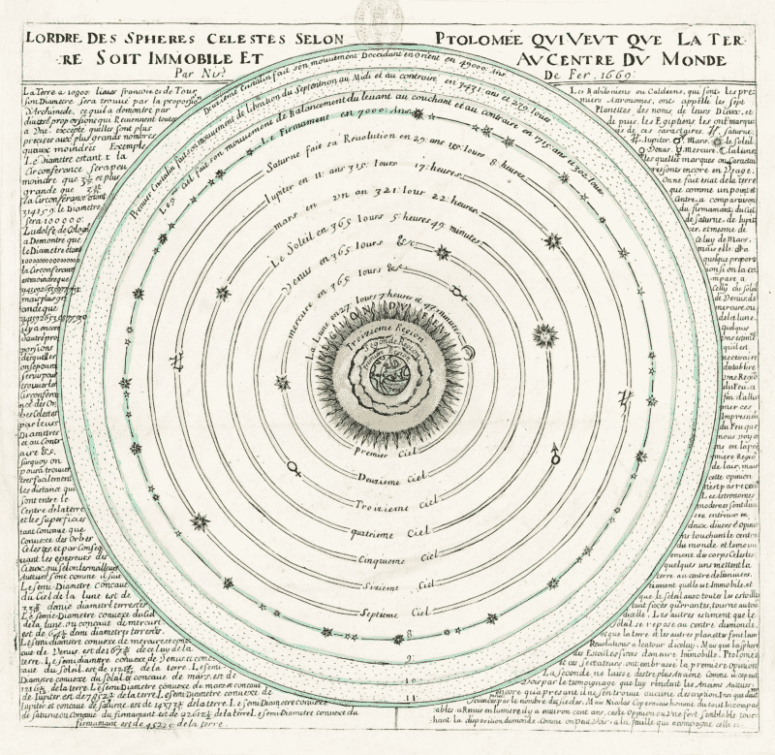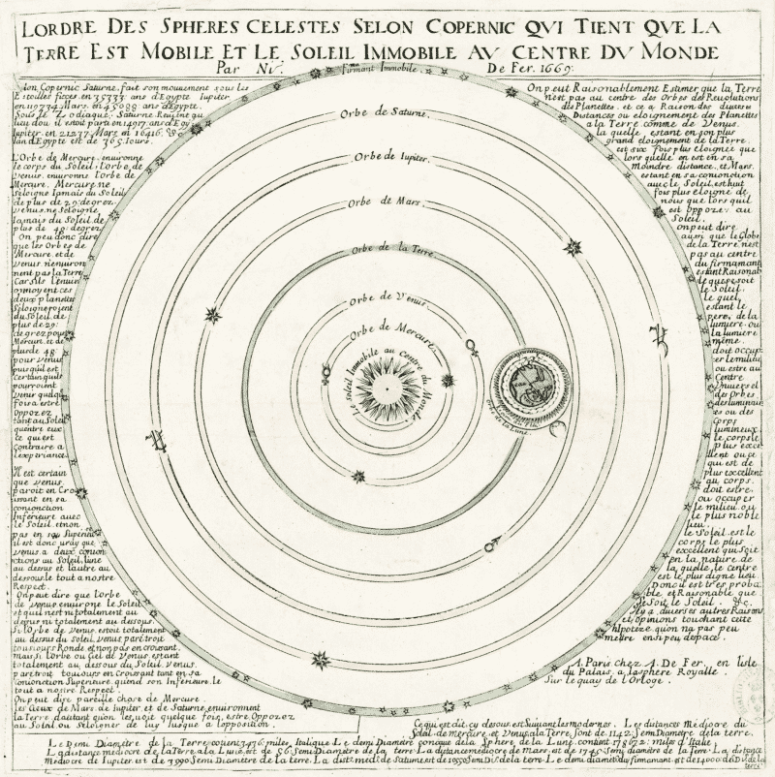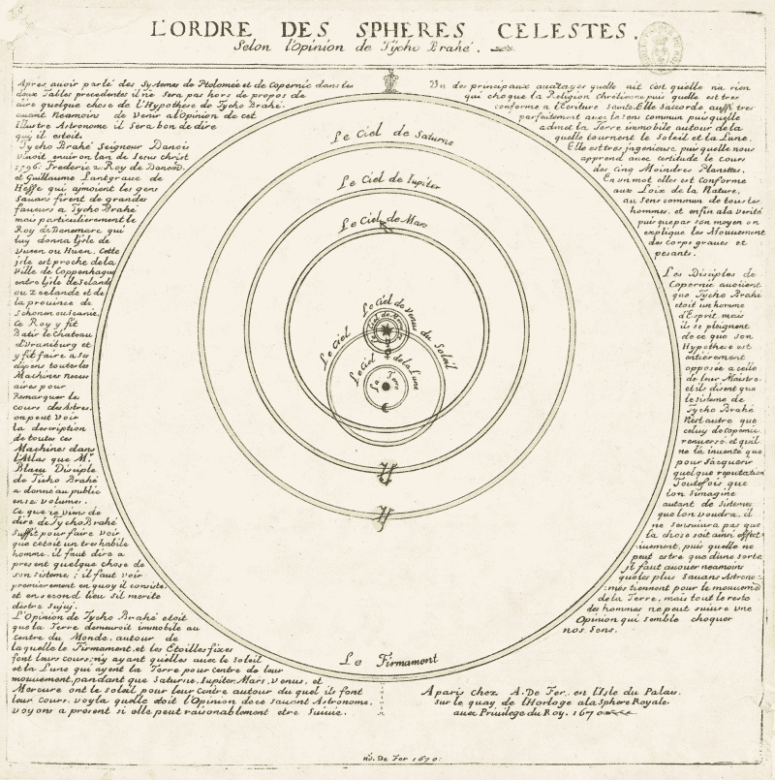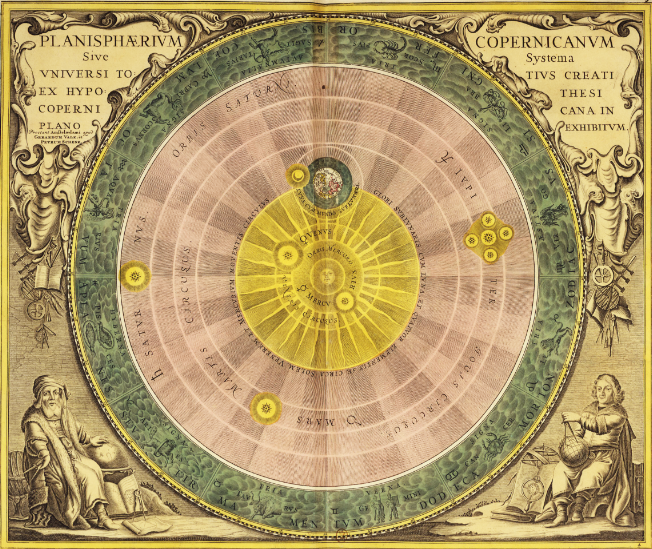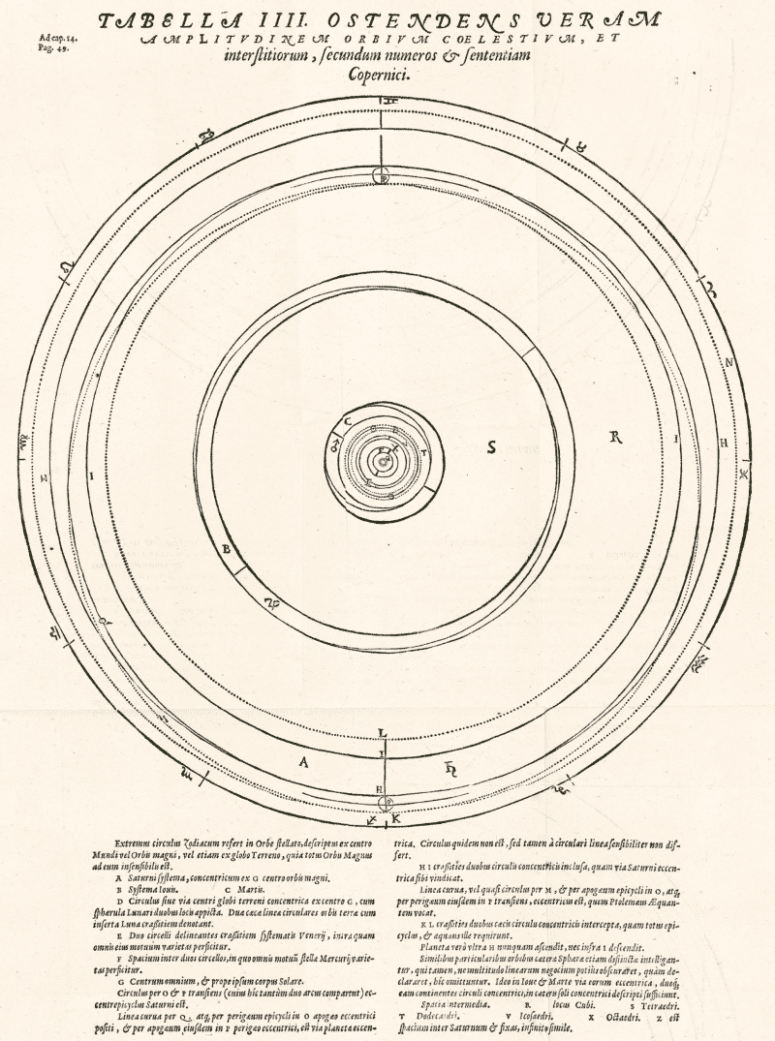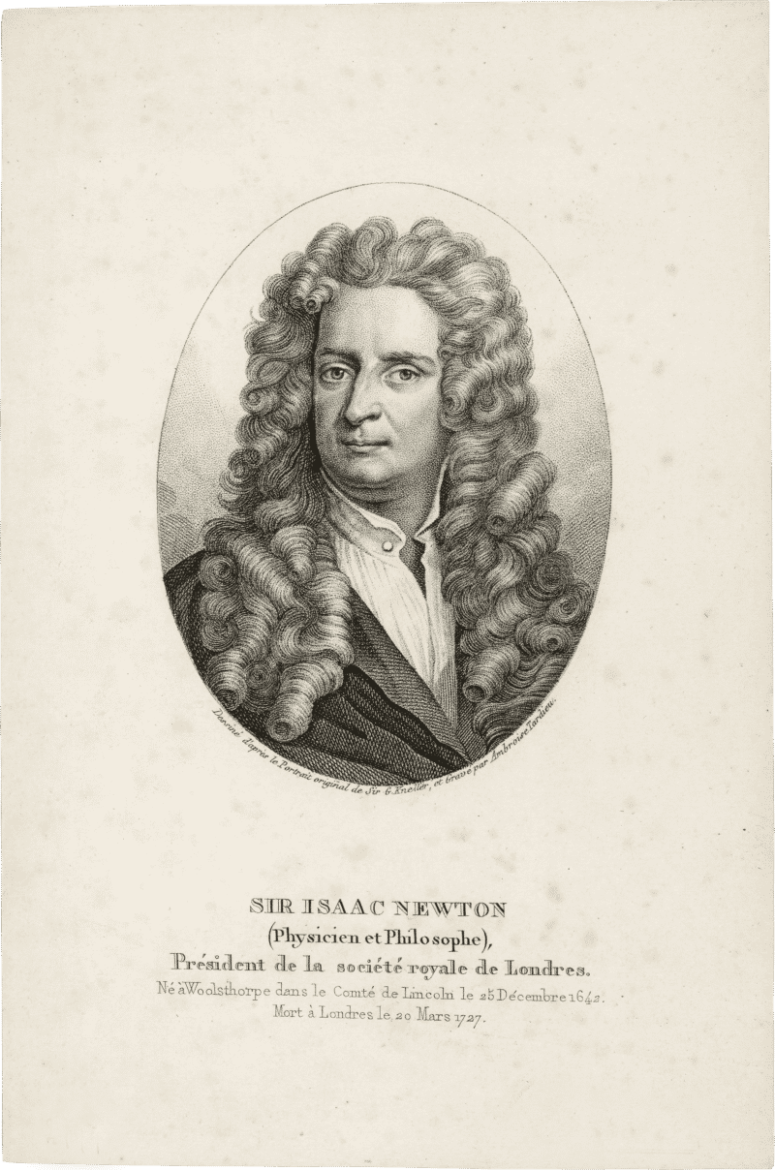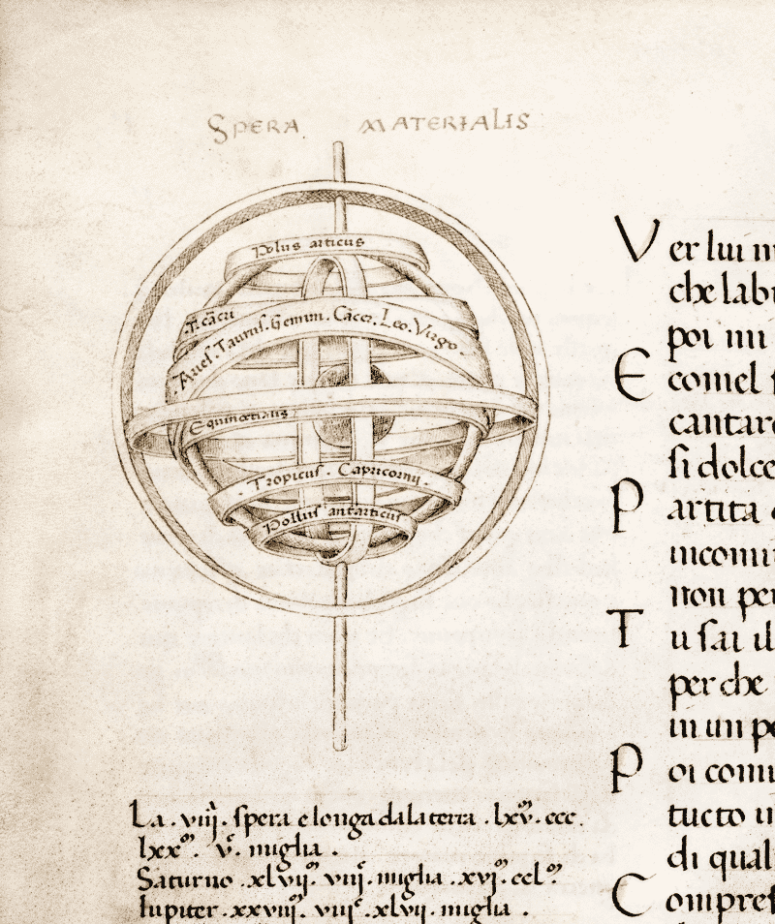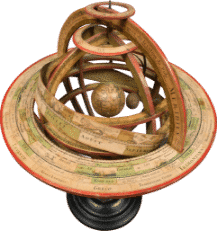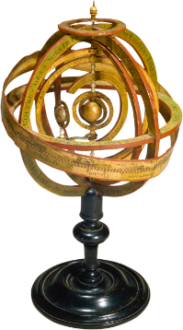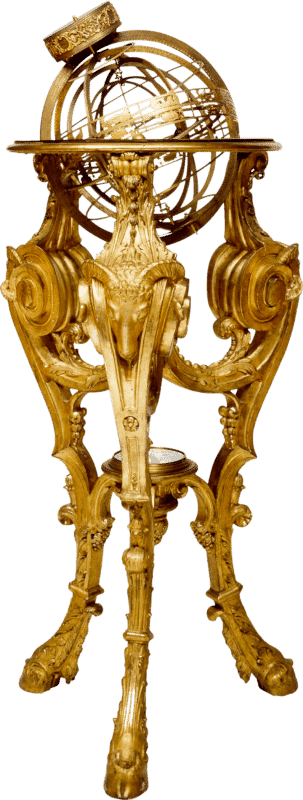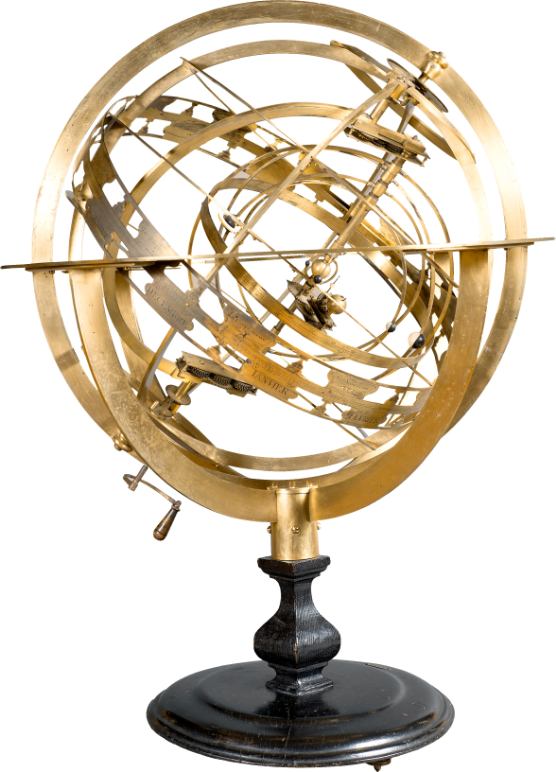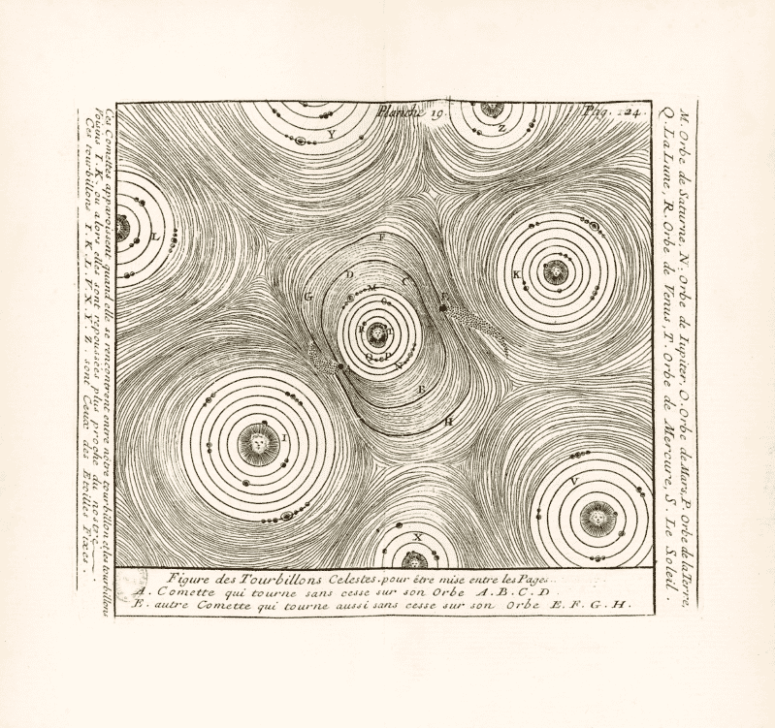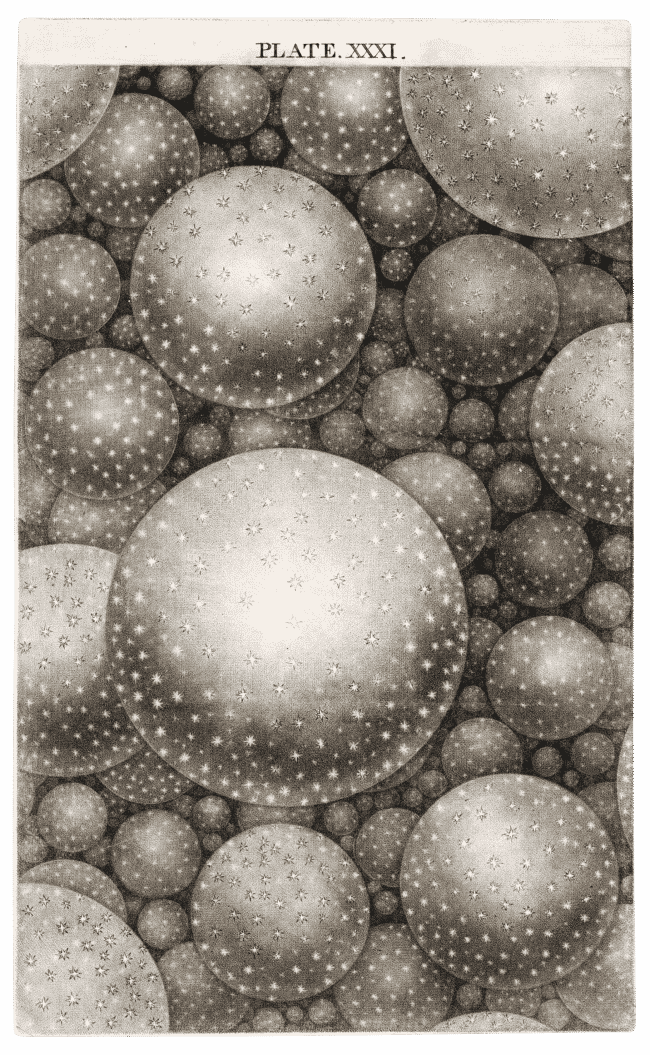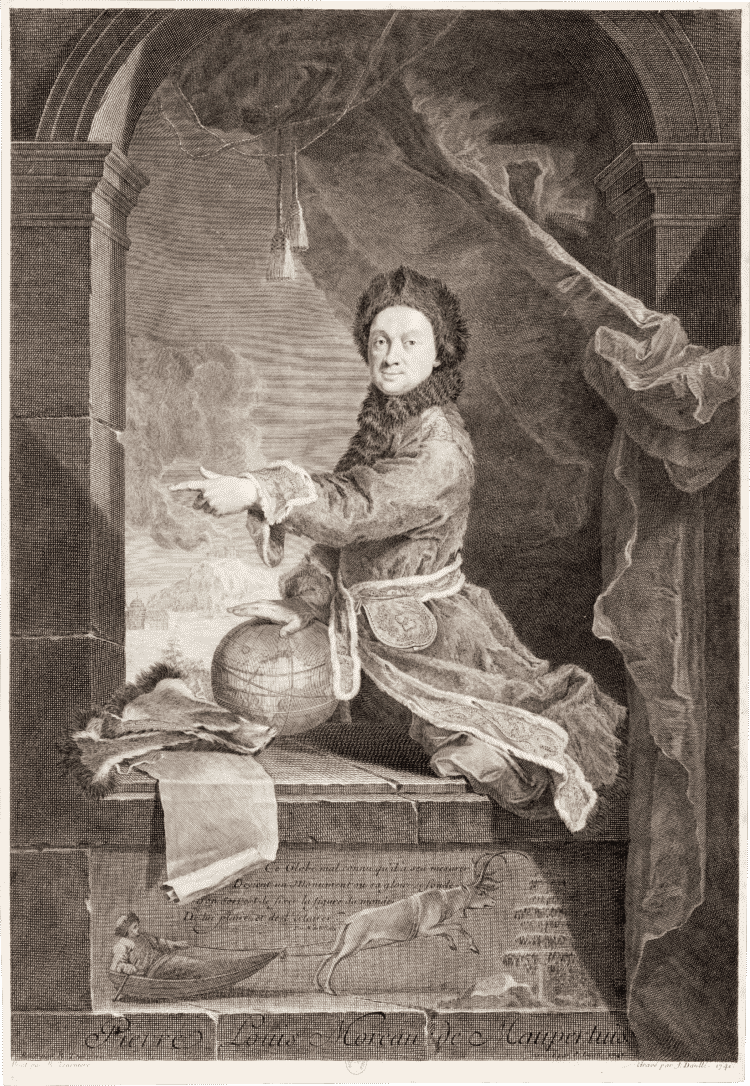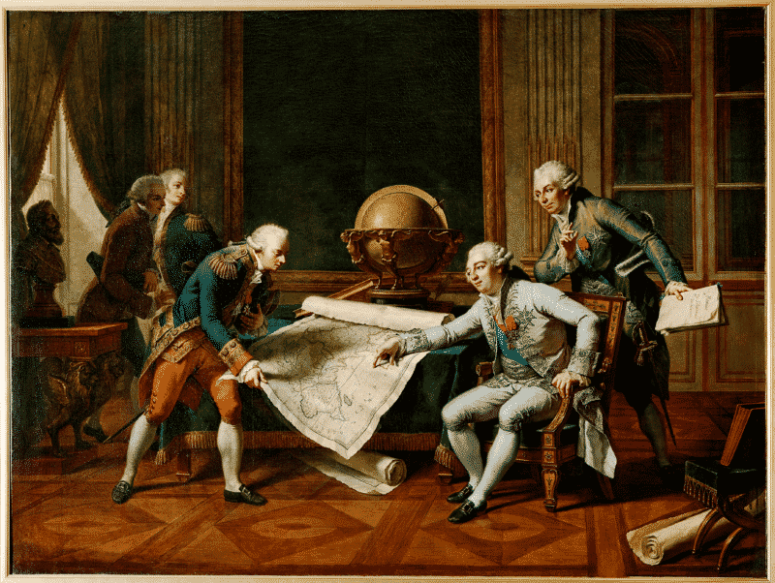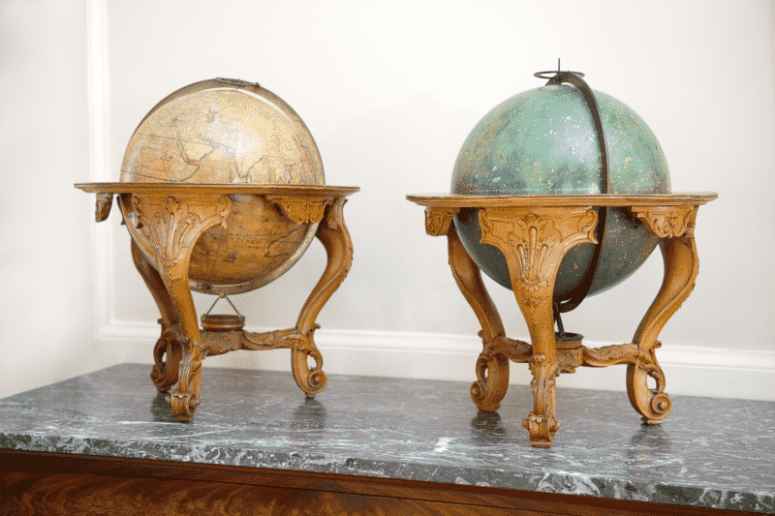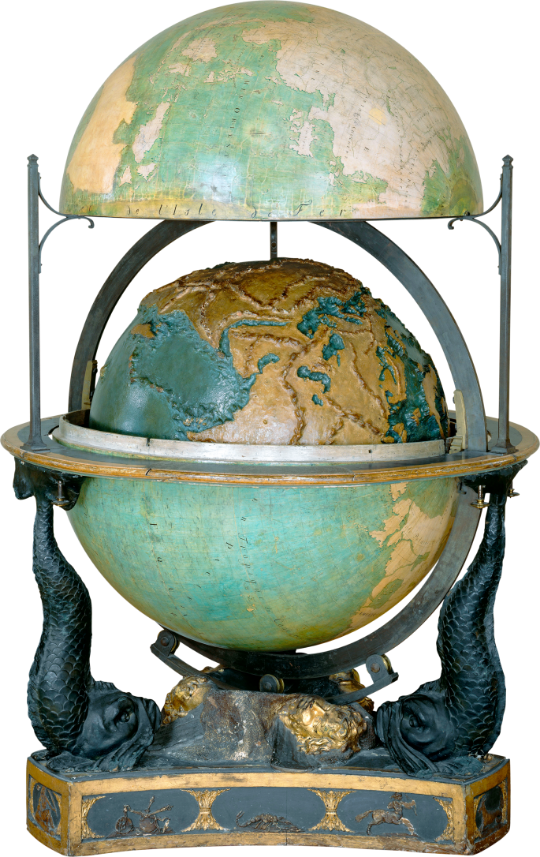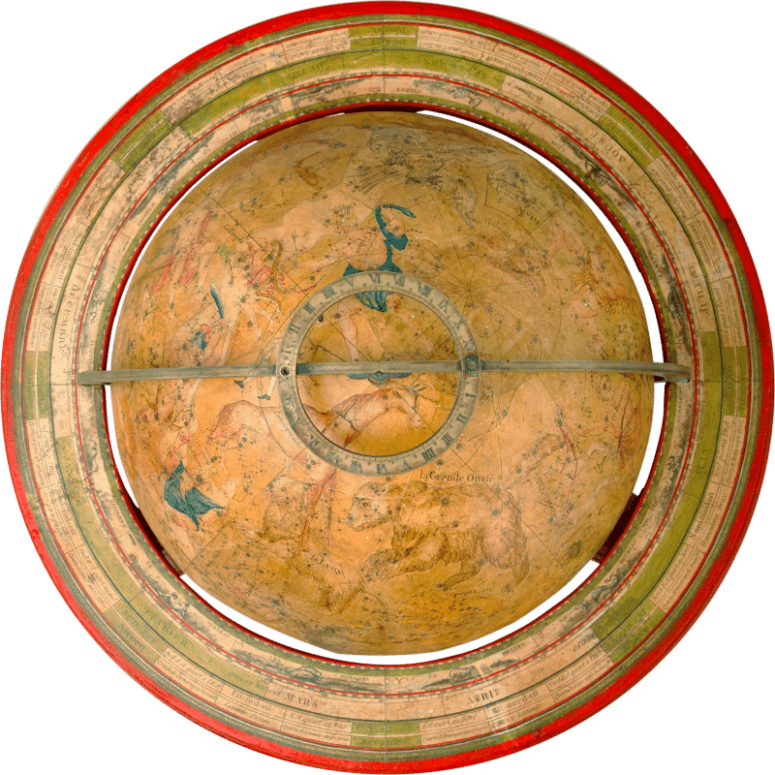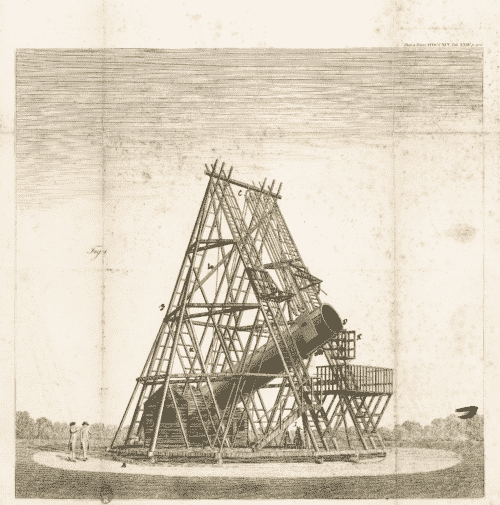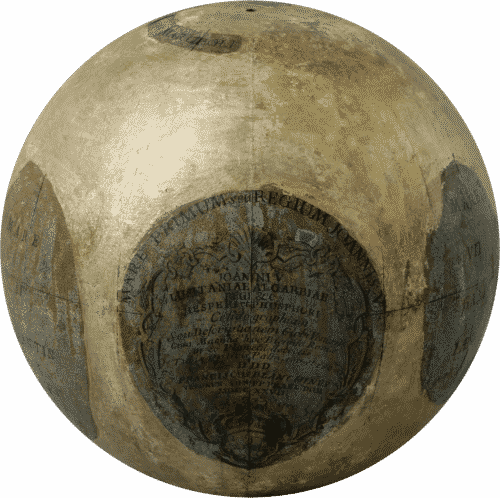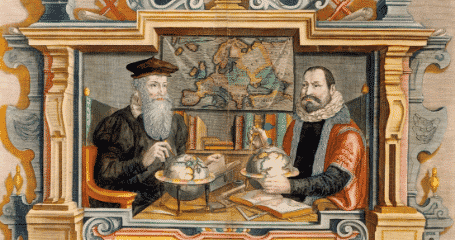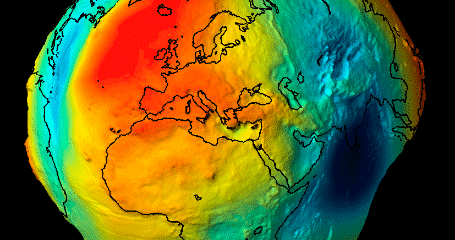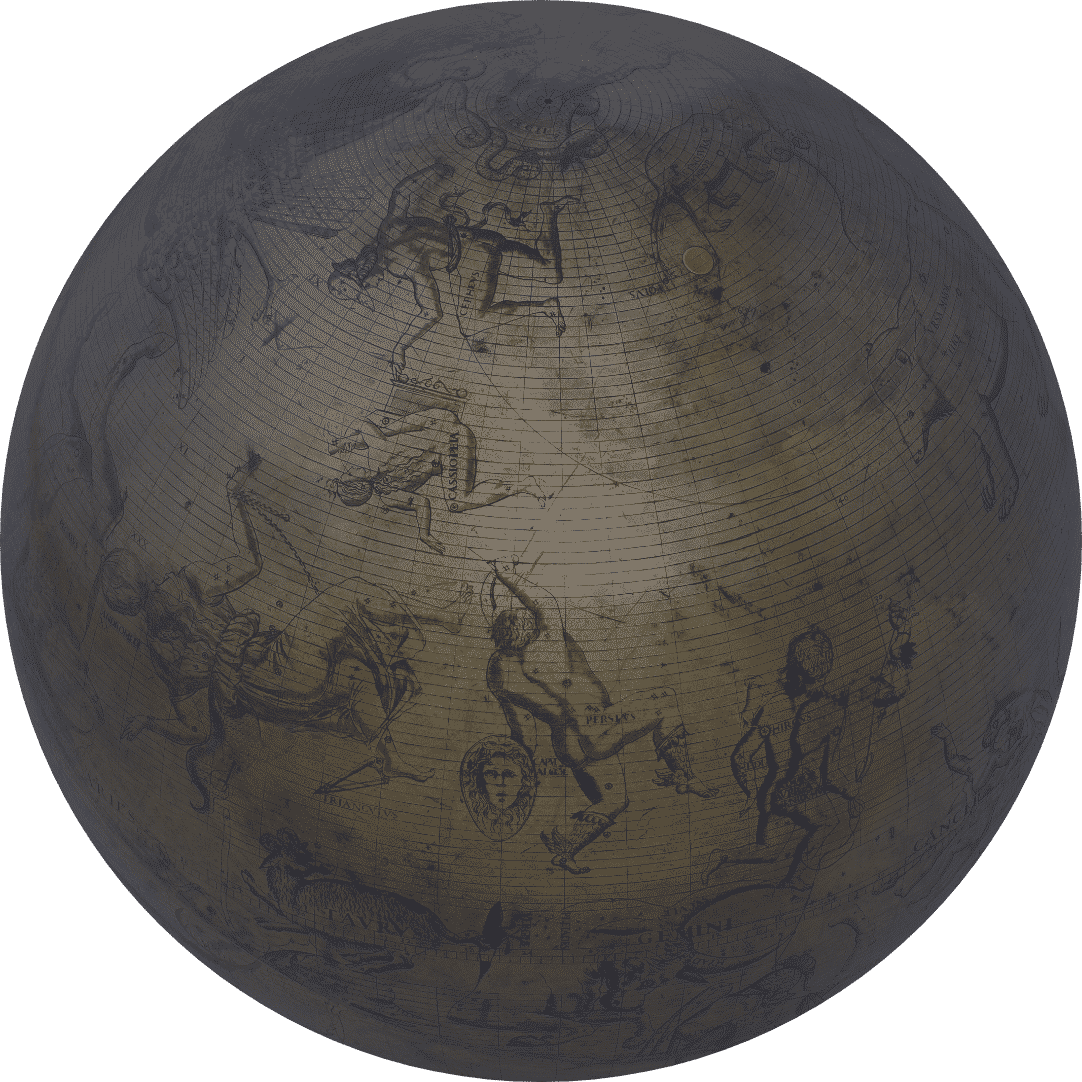
Sphere Revolutions
In the modern era, scholars like Copernicus, Kepler and Newton struck a series of blows to Ptolemy’s cosmology and its closed, immutable universe of nested spheres. Improved lenses and telescopes were continuously supplying new data. With theory and observation feeding into each other, new horizons were opening to science. The question of the plurality of worlds was raised at the same time as new theoretical foundations for the universe were being established.
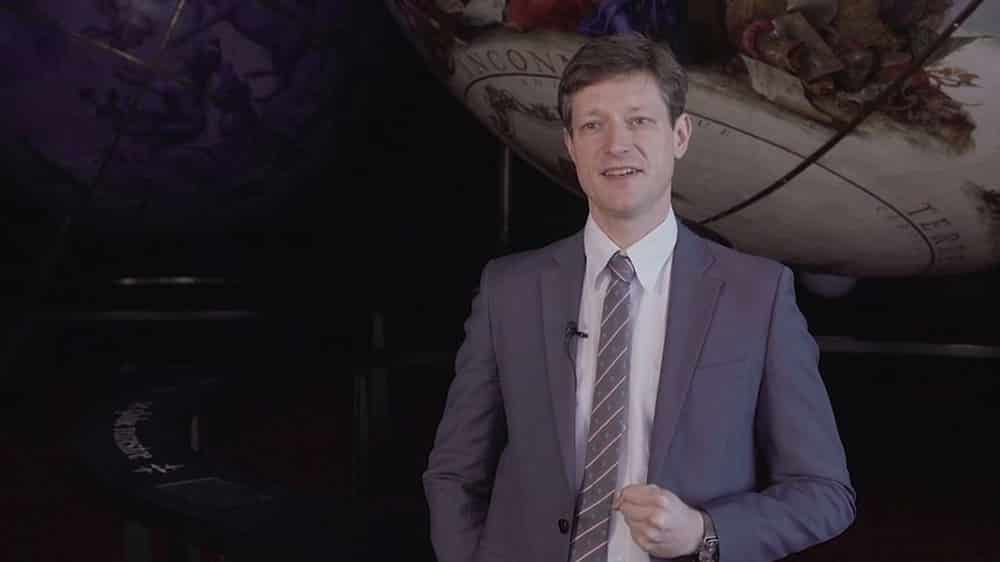
The copernican revolution
In 1543, Nicolas Copernic (1473-1543) placed the Sun at the center of the concentric spheres. This speculative hypothesis maintained the concept of a finite universe encompassed by a sphere of fixed stars. It did not affect elementary astronomical calculations, nor did it challenge fundamental dogma inherited from ancient and medieval science… but it did dethrone the Earth from its central position. A half a century later, Tycho Brahe proposed an alternative model that gave the Earth both its centrality and its immobility back: the Moon and the Sun revolved around it, while the other planets revolved around the Sun.
In 1616, the Church condemned the Copernican system, and, without officially rejecting Ptolemy, expressed a preference for Tycho Brahe’s system, which was more compatible with modern science. It wasn’t until the early 18th century that Copernicus’s hypothesis prevailed, and the first heliocentric armillary spheres were produced. Inspired by Copernicus, scientists began challenging classical cosmology as their grasp of the Earth’s geography became more accurate.
Although the validity of Copernicus’s heliocentricity, i.e. the hypothesis that the Earth revolves around the Sun, was eventually proven (Bradley, 1729: Aberration of Light), it was the laws of Johannes Kepler (1609 and 1618) and Isaac Newton (1687) that created the greatest upheaval. Universal gravitation, elliptical orbits, periodic comets such as Halley’s, the discovery of new planets and satellites, countless stars, and the hypothesis of multiple mobile worlds all went against established dogma. The world in spheres was beginning to wobble on its theoretical foundations, but the production of globes continued to develop, because spherical representations of the Earth and Heavens retained their educational and symbolic value.
Armillary spheres
Armillary spheres offer a mechanical model of the universe. These geared devices are composed of a series of concentric rings, or “armillaries,” revolving on a central axis. Each ring holds one planet and turns around the Earth – in versions that respect Ptolemy’s theory – or the Sun, for those that follow Copernicus’s. Hence armillary spheres make the imaginary structure applied to the sky visible, in order to allow people to better comprehend it.
The first heliocentric spheres, which appeared circa 1700, co-existed for a time alongside geocentric spheres. In fact, the Copernican and Ptomelean models were often displayed side by side. In addition to their educational and aesthetic value, armillary spheres had remarkable automation mechanisms that brought them spectacularly to life. This meant that they were particularly fascinating and prestigious items to own.
Plurality of worlds
In 1644, the philosopher René Descartes (1596-1650) theorized that the universe was composed of a multitude of Copernican systems of nested spheres, and that each star was the center of its own system. Our solar system was, therefore, just one among an infinite number of “vortex” systems in mechanical motion. In 1686, the writer Bernard Le Bouyer de Fontenelle described the universe as a “a cluster of huge balloons bound together, constantly expanding and deflating,” each of which includes several potentially inhabited moons.
The possibility of inhabited worlds has long stirred thinkers’ minds: from Gassendi to Flammarion to the present day, the question of the plurality of worlds remains unresolved.
The shape of the earth
In 1687, the physicist Isaac Newton hypothesized that the Earth was an imperfect sphere, slightly flattened by centrifugal force. This led to a quarrel between the Paris Observatory, where the Cassini “dynasty” of directors insisted that the planet was elongated at the poles, and the Greenwich Observatory, proponents of flattening. Over the years 1735 to 1744, Maupertuis’s geodesic expedition to Lapland and La Condamine’s to Peru furnished proof of flattening at the Poles through comparative measures of the Earth’s curvature.
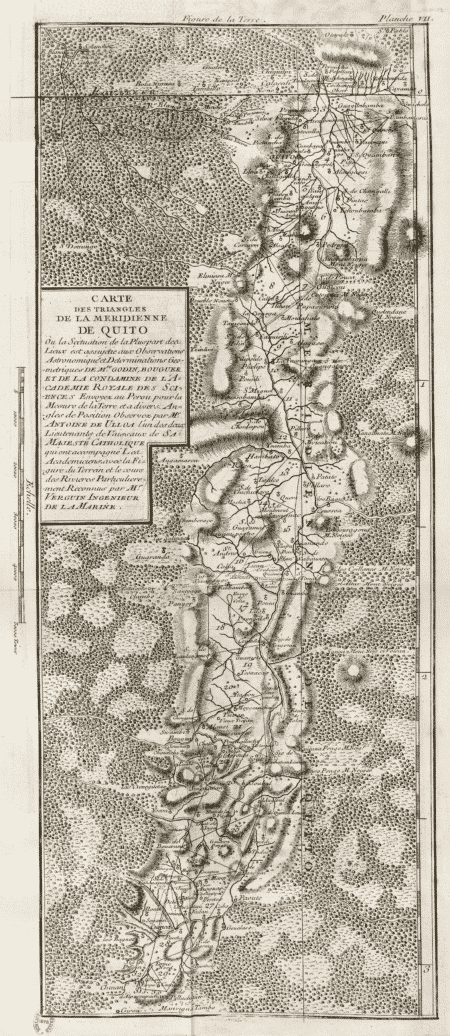
Nearer to the stars
After the 16th century, the presence of European explorers and scientists on every continent allowed for the observation of every part of the sky. Around 1600, the celestial globe was enhanced with new constellations inspired by exotic animals, like the Bird of Paradise and the Toucan. Around 1750, others were named for technical instruments, like the Microscope and the Pneumatic Machine. Improved telescope power revealed tens of thousands of stars, overflowing the outlines of the constellations.
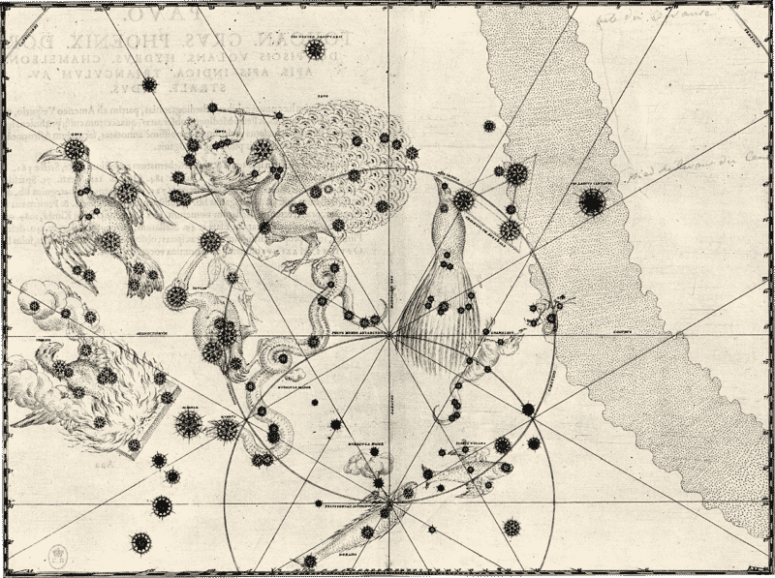
Thanks to progress in telescopes from Galileo’s time (Sidereus Nuntius, 1610), observing the Moon became a scientific field: selenography. This included relief cartography, which divided the surface into lands, and either seas or craters, and studying its librations, oscillating motions that are asynchronous relative to the Earth. While we owe the Moon’s cartography largely to Huygens and Cassini, its nomenclature was established by the Jesuit Giovanni Riccioli (1651). Nevertheless, Venus was the first heavenly body to be represented in the shape of a globe – by Francesco Bianchini in 1727 – whose cartography is now entirely obsolete. It wasn’t until the late 19th century that globes of the Moon and Mars became commonplace.
